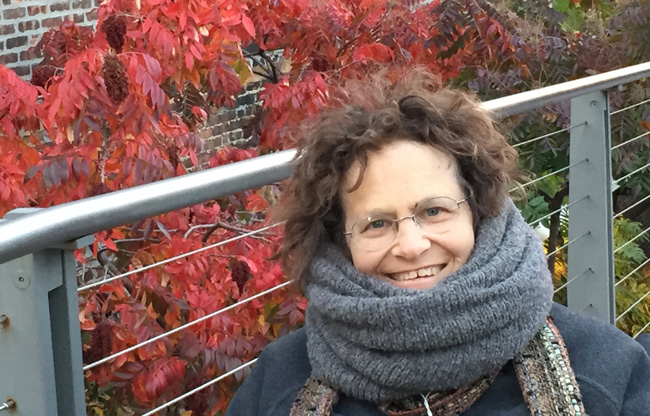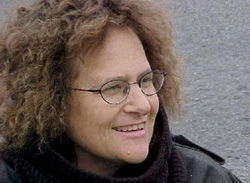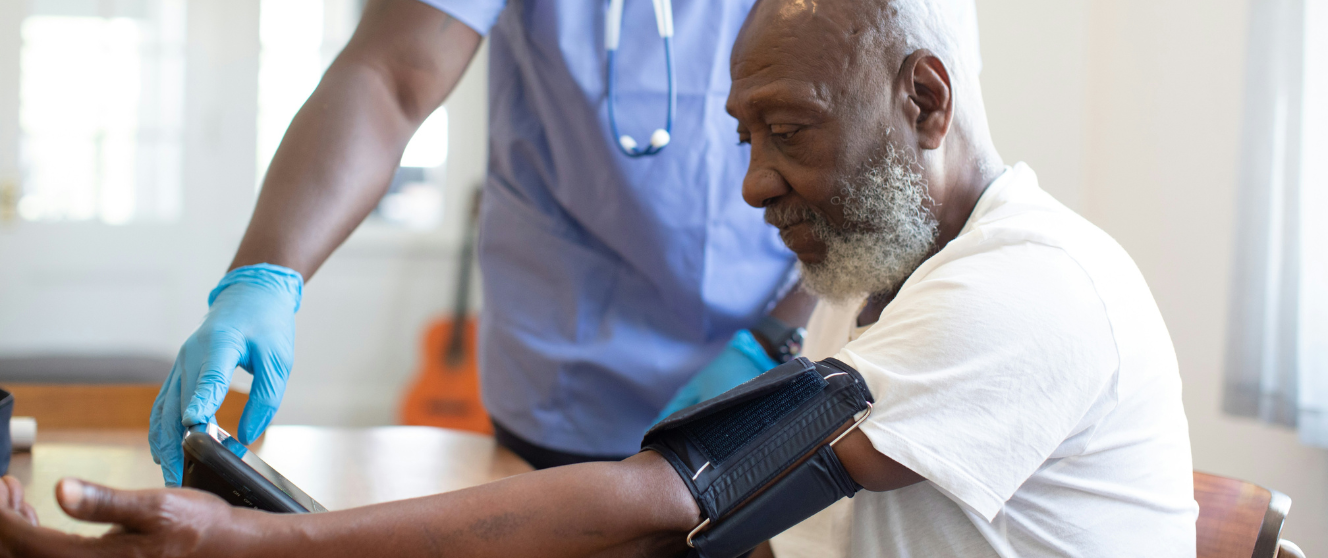

Marilyn Golden
1954 – 2021
“One hopes that the changes in law and policy we worked on
at DREDF will be something the disability community can build on.”
Marilyn Golden, answering the question, “What would you like your legacy to be?” in a 2002 interview
Marilyn Golden, senior policy analyst for the Disability Rights Education & Defense Fund (DREDF), died at home on September 21, 2021, surrounded by her family. A long-time disability rights advocate, she played a key role in the development, passage, and implementation of the Americans with Disabilities Act of 1990 (ADA). Her advocacy molded and shaped accessibility in the United States and improved architectural access and standards worldwide. She spent more than three decades working to see that the ADA was implemented and enforced, and teaching others the value of disability civil rights via, and beyond the law.
“Working on the ADA was one of the most important experiences of my life,” said Marilyn when asked about the impact and evolution of the ADA in 1999, “and it is something I’ll never forget. Something I treasure and value—to both have such an incredible experience and also to make a contribution.”
And contribute, she did.
From her leadership on both the development and implementation of the ADA, to the unglamourous, nitty gritty details she steadfastly injected into statutory guidance and regulation, to the people she trained and gently mentored every step of the way, our friend and colleague Marilyn Golden changed for the better how we use public spaces, design buses, trains, planes, and boats, and create equitable transit services. She also thought that assisted suicide was dangerous public policy for disabled people and her opposition never faltered, even in the face of powerful forces working for legalization.
Marilyn graduated Magna Cum Laude and Phi Beta Kappa from Brandeis University in 1977. Soon after acquiring her disability in 1976, her passion for justice led her to channel her widely respected focus and commitment in service of the emerging field of disability civil rights.
“I got radicalized, in a general sense, after I got hurt,” Marilyn later recalled. She was drawn to the disability movement, in part, “…because I realized this was a place where I could play a role.”
In the early years of her disability advocacy, it was equal access to transportation that first harnessed her energy and attention and, as she phrased it, “to put all of my political efforts into the disability movement, both on the job and off the job.”
Marilyn’s management and leadership skills were evident early on when she was hired at age 25 as the Director of Access California, an Oakland, California resource center on architectural and communications accessibility. She served there for nine years before joining DREDF in 1988.
While working to pass the ADA, Marilyn also served as the Co-coordinator of the Disabled International Support Effort, which provided material aid and technical assistance to disability organizations in developing nations. Her involvement in international disability rights grew following the ADA’s passage. She was called upon to share her disability rights knowledge with audiences and advocates in South Africa, Germany, Austria, New Zealand, Australia, Switzerland, Spain, Costa Rica, the European Union, and at the United Nations Fourth World Conference on Women in Beijing, China.
“What you want is rising expectations. That’s the clearest sign of progress,” she said in the 1999 interview. “There will be many things [the ADA] does not succeed in doing, and yet society will still be in a very different place than it would have been, had we never had the law. There’s also the difference it makes to people with disabilities, and I have seen a huge rise in the level of expectation of the community. The community knows, now, what it means to get major legislation passed.”
Following passage of the ADA in 1990, Marilyn continued to play key roles in policy development on the federal level, in the areas of transportation and elimination of architectural barriers. She was appointed by President Bill Clinton to the U.S. Access Board in 1996, where she served until 2005. President Barack Obama honored her as a White House Champion of Change in Transportation in 2014. She also served on three federal policy advisory committees: the Rail Vehicle Accessibility Advisory Committee (U.S. Access Board, 2013-2015), the ADAAG (Americans with Disabilities Act Architectural Guidelines) Review Advisory Committee (U.S. Access Board, 1994 – 1996), and the Urban Mass Transportation Administration’s ADA Federal Advisory Committee to assist in developing the DOT ADA regulation (U.S. Department of Transportation, 1991).
Further reflecting on the early days of the ADA, Marilyn recalled, “I spent eight months in D.C., the main year that the ADA was going through Congress, and I had four major roles… One was some of the policy development, particularly on transportation, and also some issues on architectural barrier policy, structural barrier removal. The second was grassroots organizing. The third was lobbying and the fourth was writing. A lot of written material, a lot of background material. And it worked, not perfectly, but, largely, I think it did work, and sometimes it worked very well.”
The same could be said of Marilyn’s decades long advocacy.
From 1992 – 1994, Marilyn directed the ADA Training and Information Network, a federally funded training project that trained and supported a network of 400 ADA specialists who themselves had disabilities. As the lead trainer for each of its eight week-long training programs, Marilyn directed and led numerous in-depth ADA training programs that gave thousands of on the ground operatives the comprehensive knowledge they needed to propel the ADA from an idea to a practical tool for creating a more accessible, equitable society. She was the principal author of DREDF’s publication “The ADA: An Implementation Guide,” which brought the ADA to an even greater number of activists, advocates, and allies.
Marilyn’s approach to public policy merged the ideal with the practical: “Why does anyone take heed of disability access? Nobody handed out civil rights laws on a silver platter. The disability movement worked very hard to attain these mandates, including through direct action—blocking buses all through the ’80s—and civil disobedience. We have to persuade business-friendly legislatures that the civil rights of people who are often segregated and excluded from society are important enough to make them a requirement.”
Manifesting this idea in necessary new directions, Marilyn applied the lessons learned in transportation advocacy in her lead role conceiving, producing, and leading the Disability Rights Leadership Institute on Bioethics in 2014. The Institute was an outgrowth of Marilyn’s longstanding opposition to assisted suicide. Beginning in 1999, she authored influential articles explaining why assisted suicide laws are dangerous public policy for disabled people, and she worked in many successful campaigns to defeat assisted suicide legislation in states across the U.S. She also represented the disability community in debates and dialogues on the subject.
Her “never stop learning” approach also applied to mentoring and leadership development. “Bringing in new people can be challenging, but there’s enough activity now in the disability community that is constantly happening. You have to constantly be bringing in new people in every possible way you can think of.”
Marilyn’s approach to advocacy is perhaps best described as always evolving, building on past success or existing knowledge, and consistently staying focused on the bigger picture. She was willing to ask sometimes difficult, often unwelcome, but necessary questions of herself and others. Never shirking the difficult, Marilyn routinely, regularly pursued explanations and answers that the end goal deserved and required.

Marilyn as we knew and loved her is gone, and—as is usually the case for many extraordinary people—the intricate backstory of all she accomplished and influenced is not immediately apparent. But make no mistake, the legacies of Marilyn’s life’s work surround us. They are, quite literally, embedded in American infrastructure. While visionary leaders are routinely credited with looking up beyond the far horizon, one of the things that set Marilyn apart was that she recognized how important it was to also look down. To pay attention to the important details others might’ve missed.
From her leadership on the development and implementation of the ADA, to the unglamourous nitty gritty details she steadfastly injected into statutory guidance and regulatory reform, to the people she trained and mentored every step of the way, our friend and colleague Marilyn Golden literally changed how we design, develop and enjoy the world we live in. Mere words don’t measure up. But, much like the countless, but largely unseen regulations and guidelines Marilyn routinely nurtured to fruition, perhaps no tribute could be more fitting.
Thank you, dear friend for leaving such a solid foundation for DREDF, and others, to build on.
We love and will miss you.

